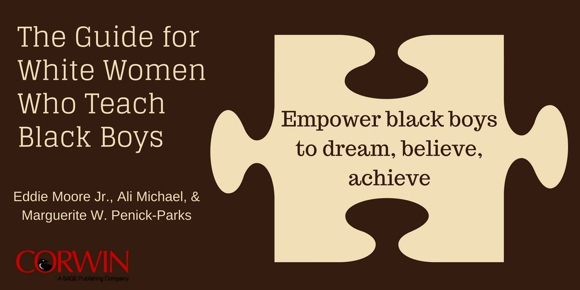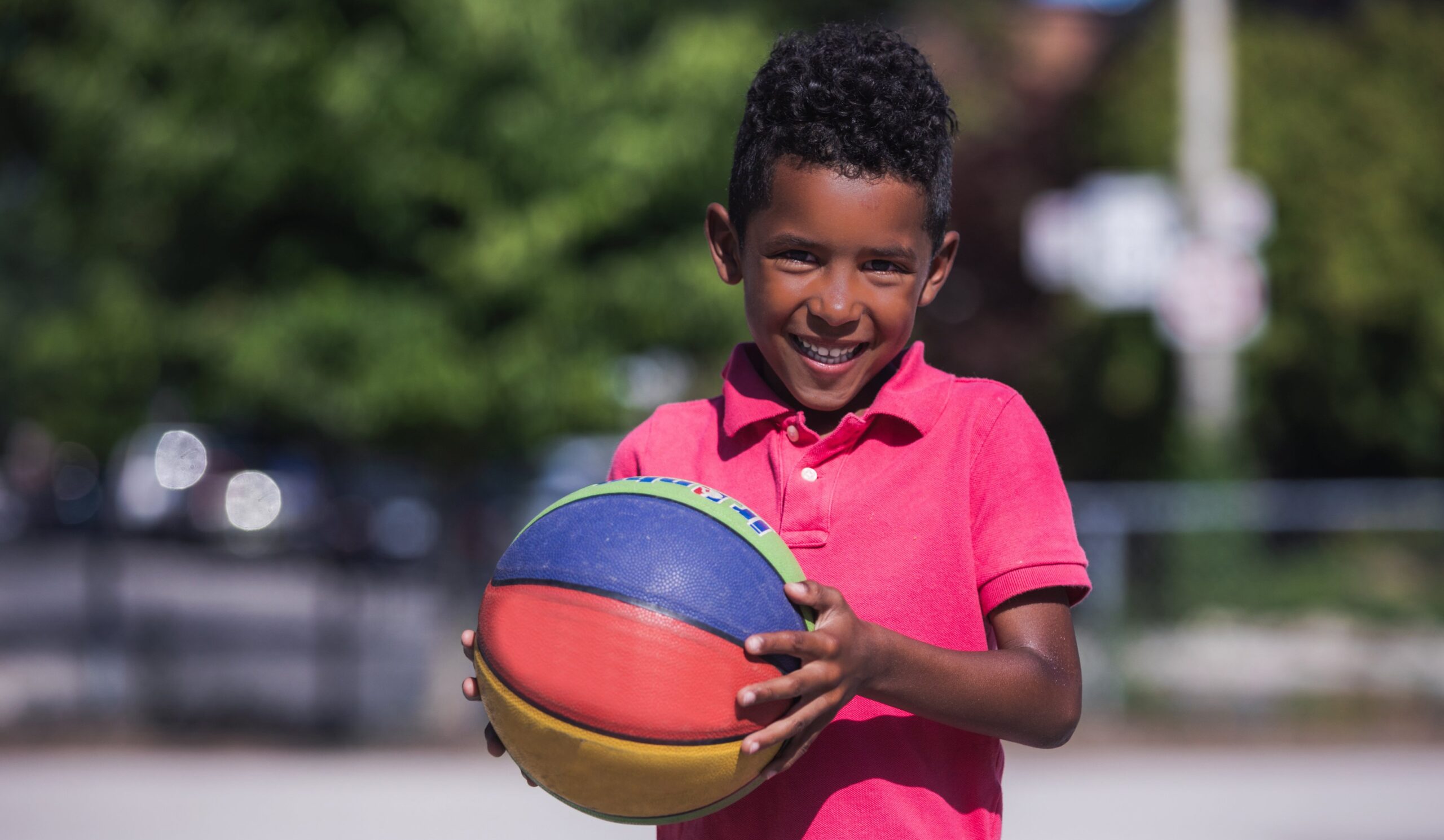What does it look like to respect Black boys in a way that supports excellence in education?
Respecting Black boys is about defying the narrative and helping them to do so as well.
Eddie Moore, Jr: A Personal Story
As a Black man who studies and writes about Black male achievement, I’m eager to share asset models of White women who have shown up for me in my education; to salute them. For me, the example that stands out is Ms. Russell, a White woman teacher who proved that being a great teacher isn’t the same thing as being a popular teacher.
To be honest, I really didn’t like her. Ms. Russell put up with none of the crap I threw at her.
- She didn’t accept excuses for my assignments being late.
- She didn’t accept my first draft as a finished draft.
- She didn’t accept my sitting in the back of the classroom.
- She didn’t accept my tardiness.
She expected More.
From the homework to the classwork, from presence and participation in the classroom to teamwork and interaction, she demanded that I be a part of all of it — which pissed me off to the utmost degree. I didn’t like it, and I didn’t like her at all. I really didn’t get it.
It would be years before I realized and came to appreciate what she was doing. Ms. Russell was shaking me out of beliefs I held at the time — that I was an athlete first and foremost. I didn’t see myself much beyond that framework. When I reflect back on that time, it’s not that she was mean or hated me or was racist. It was the opposite. She expected more, saw more, and supported me more than I realized in that moment. I’m not sure I’ve even shared this with her. Ms. Russell helped me see that I had more than athletic ability inside of me. That expectation was life-changing.
Ms. Russell met me when I was firmly grounded in a stereotypical framework, and she literally shook me from that mindset and the behaviors that went along with it. She did it by holding me to high expectations — expectations I didn’t think I should have to meet; expectations I didn’t really know if I could meet.

Blackness + “Boyness”
When we think about respecting Black boys, we have to think about why their Blackness and their “boyness” is even salient. The combination of being Black and being a boy means that there’s a narrative out there that’s already written about:
- Who you’re going to be (an athlete or a thug — not a scholar, not a debater, not an actor).
- How you’re going to be (loud or aggressive or apathetic or lazy — not kind and empathetic and smart).
- Where you’re going (juvie, jail, detention — not medical school or law school or a school of education).
This may seem extreme; no doubt you know plenty of Black boys who defy these narratives. But think for a moment of all the Black boys who do fulfill the narrative, who don’t stand out as they slide into the role that was built for them. And consider what needed to happen to help the Black boys who defy the narrative do so. This is a narrative so pervasive that many Black boys believe it themselves.
Black Boyhood vs. White Girlhood
Respecting Black boys means respecting the constraints and challenges of Black boyhood that are, frankly, diametrically opposed to White girlhood. One of the editors of our new book, The Guide for White Women Who Teach Black Boys, recently passed a police officer having a conversation with two young White women. The conversation was friendly, jovial, and bordered practically on flirtation.
Imagine the same interaction — one in which two teenagers ask a White male police officer for directions — with two Black boys, around 17 years old, instead of White girls. Would it be friendly? Jovial? Flirtatious?
White girlhood, in every way, sets White women teachers up to have a blind spot when it comes to understanding the experiences of Black boyhood because you move through the world with a different narrative. It’s a narrative that’s both more expansive and more humane. Respecting Black boys means knowing this. Knowing that you don’t know. And learning more.

The Guide for White Women Who Teach Black Boys was created to help support White teachers to begin this process. It, like this series of blog posts, is divided into three parts: Understanding, Respecting, and Connecting. It’s about increasing Black male achievement by:
- Understanding self.
- Respecting the constraints and challenges of Black boyhood, while respecting the diversity and multiplicity of Black boys.
- Connecting with Black boys and their families, while also connecting school structures with student success.
We encourage you to continue the journey of understanding and respecting by engaging in the two exercises below, both of which come directly from The Guide.
Activities From Part 2 of The Guide for White Women Who Teach Black Boys: Respecting
- In the spirit of basing classroom interventions on empirical research that asks Black boys, “who they are, what they think, and what they desire in their lives,” teachers are invited to print an Identity Map and have a Black boy student complete it in school this week.
- Use that Identity Map to influence a lesson next week. Remember the principle of Universal Design; it states that a design based on the deep and specific needs or interests of one individual can be even more effective for an entire group than a lesson based on the broad and superficial understanding of the group at large.
- After completing this task, assess its value, and then progress to doing Identity Maps with all Black boys. Teachers might choose to do Identity Maps with every student at the beginning of the next school year. (From Chapter 19, Joseph Derrick Nelson)
- This suggested activity is for our teacher-readers. If you find yourself having a difficult time with a Black boy (or girl) at school, don’t seek punitive retribution. You’ll gain that child’s trust and respect by drawing him (or her) closer.
- Eat lunch with that child or go to one of his extracurricular activities. Go out to dinner with his family. Do a home visit to experience the child in his space. Talk to parents about their goals and aspirations for their child.
- After spending time with a child outside of the classroom, you’ll never view that child or his family the same again. Your relationship with that child and his family will forever be changed with just a little intentionality, openness, and time. (From Chapter 23, Chonika Coleman King and Jabina Coleman)
How do you defy the narrative for Black boys in your classroom? How are you intentionally respecting the constraints and challenges, as well as the diversity and multiplicity, of Black boys? Did you try one of our activities?






